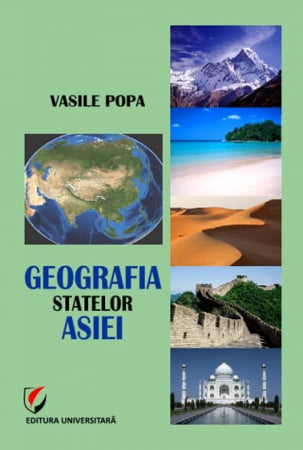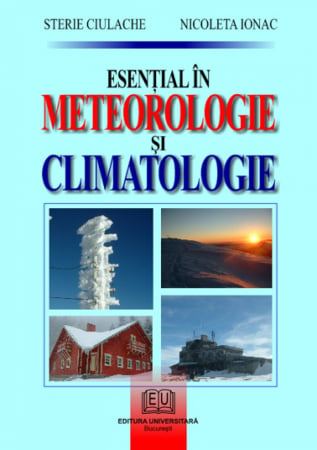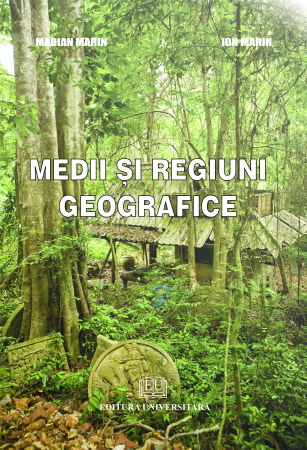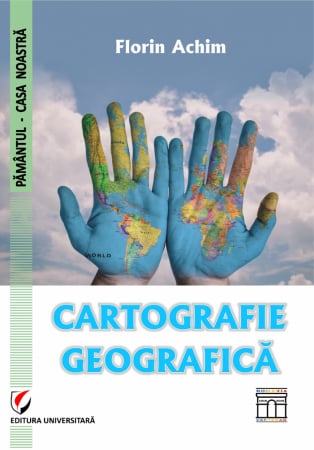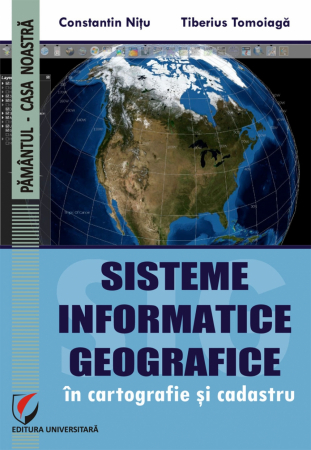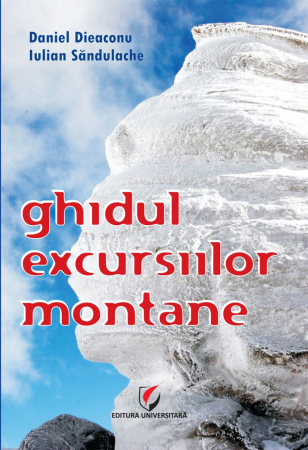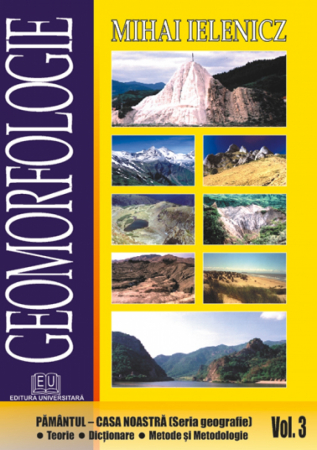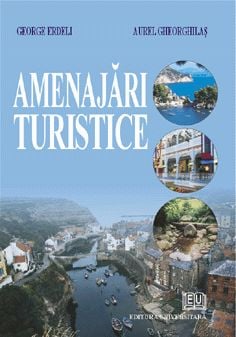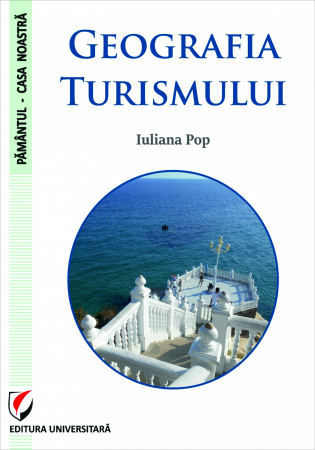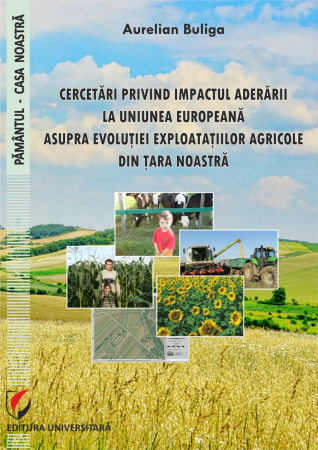ISBN: 978-973-749-930-1
Publisher year: 2010
Edition: I
Pages: 230
Publisher: Editura Universitara
Author:
- Description
- Download (1)
- Where to find it
- Authors
- Reviews (0)
The book "Water resources and environmental conditions in the Negev Desert. Israel "has been publicly supported the thesis of Mr. Nathan Cohen in December 2001 at the Institute of Geography of the Romanian Academy, obtaining his Ph.D. in geography with" very good ".
Development work on this theme resulted from discussions with Mr. Nathan Cohen in 1993 during a visit to study the program of cooperation between the Romanian Academy and the Academy of Sciences in Israel on "Water resources and geographical areas of risk." This exchange interacademic, which was attended by Prof. Dr. Adrian Cioaca from the Institute of Geography of the Romanian Academy was occasioned by a cooperation agreement between Romania and Israel, which has trained and renowned specialists in Israel (Prof. Dan Bowman of the University "Ben Gurion" in Beer Sheva and Prof. Zwi Institute Offers "James Blaunstein" Desert Research at Sde Boqer a) and Romania (Prof. Dr. Dan Bălteanu of the Institute of Geography).
On this occasion, was visited several geographical units in Israel including the Negev Desert revealed water resource problems, particularly poor and management to meet socio-economic. Noting the interest of Mr. Nathan Cohen for the state of the environment in relation to potential water resources and the fact that active and continues to work, and now, in the city Beer Sheva, located in the northern Negev desert, it was agreed to follow the passes / steps outlined, with exams and papers and drafting paper.
Work in an extension of 230 pages apart from the text itself contains 62 drawings of maps, photos, profiles, 12 color photographs, a list with 78 titles and bibliographical has 6 chapters.
In this chapter beginning on the geographical location issues are addressed in the context of neighbors Egypt Negev desert in southern Jordan in the east, Gaza, the West, as part of the geographical unit considered. There have also been addressed and historical aspects, especially after the conquest of independence and the demographic, population growth through the expatriation of Eastern Europe and Africa and the need for water resources, an important component of life and economic development.
Chapter - Environmental factors in the Negev desert comprises components that define the state of the environment and resources specific geological structure with basement, specific relief, arid climatic conditions that determine the vegetation and fauna.
In terms of the geographical unit by ancient geological, paleogeographic evolution, lithology special characteristics with eruptive rocks, metamorphic, but, especially, the compact settlement covering 90% of the desert that are not favorable accumulation and scarce water resources from rainfall . These formations are suitable to obtain building materials and cement industry (limestone) and rocks of precipitation for phosphorus, potassium, bromine, gypsum is used in the chemical industry.
Relief determined by geological structure Negev plateau, arid climatic conditions is of type Hammad, injured except the north-west to the Mediterranean coast and the eastern Arava valley. The latter is a continuation of the East African graben, which in the northern terminal houses the two lakes - the Dead Sea and Sea of Galilee (Kinneret). Platform structural relief was much deformed over time, resulting in bulging (anteclize) with massive dorsal ridges and dipping (sineclize) with pools and passageways depression. As specific relief developed on limestone rock canyons stands (Nahalal) and buttonholes anticline rounded, the latter giving a very specific aspect Negev, called local Makhteshim. Occupied by the Dead Sea graben edge and Arava valley, are characteristic of slide structures were redressed by the vertical (height Sedom) gipsifere parties and, especially, Lisan deposits, which are formed Badlands's true.
Climate, geographical position determined between the Mediterranean and graben, called here, West Asia, with dams in the mountainous east, and north latitude (30-32 °), near the southern desert of the Sinai peninsula, hot and arid climate causes but with many special events - producing torrential rains flood the dry valleys of gravel transport and short bolovănişuri, dust storms, which complicates the development of vegetation and human living conditions, etc.. Radiative component rather high (675 cal / cm ² / day in the north and 725 cal / cm ² / day in the south in June), summer high temperatures (31-32 º and 38 averages in the mountains and the valley Arava), low humidity (20 50% in summer), high average wind values (5-6 m / s), precipitation in small quantities (in North 300mm/an Beer Sheva and 30 mm / year in the south to Eilat, geomorphological processes determine decomposition characterized by (meteorizaţie physical) and chemical alteration.
Hydrography Negev, namely network of dry valleys in most of the year can be considered as a network made at other times when the climate was wet.
Regarding the impact of human activities in the Negev Desert, the author brings relevant personal data occurred in recent decades by emissions from the chemical industry, solid and liquid waste from the same companies, metal waste and those resulting from tourism activity affecting the characteristic landscape. Is raised in this respect, the "Israel 2020" the author draws the attention of the reduced capacity of absorption ability of the environment of this waste.
Particular attention is given to author and use their water resources in poor conditions and need to supply the local potential and existing urban rural settlements. Given the episodic rainfall and drainage basin network, the valleys, the author adopts an appropriate method of management of water resources, analyzing the relationship between rainfall, the bedspread lithologic deposits on slopes and river valleys to show their accumulation and transfer, by springs, water from underground. These groundwater resources are better shape depressions in porous formations and valleys on the slopes with small inclination. In this respect it is estimated that only 38% of the Negev has water storage capacity. A good example is the city of Beer Sheva in translation means, seven wells, the largest in the region analyzed and ancient underground water supply is by wells.
Withholding water for episodic floods in small reservoirs is prevalent in the northern valleys where there are fine alluvial loess deposits or material which are called the Beer Sheva district through. These are points in the landscape with trees - eucalyptus - the dam of land not exceeding 4-5 m height. This traditional process is amplified at this stage in the Gaza region, by building more resilient.
Another way to use ground water, salt, is bringing it to the surface by drilling and development of mesothermal salt ponds for fish. In the Dead Sea and Gulf of Aqaba, in the Arava valley, small ponds were built to retain water from precipitation.
Also, the author briefly to cover the needs of water and seawater desalination is practiced but with high costs Ashdot - Mediterranean Sea and Eilat - Aqaba Gulf, Red Sea.
Although these actions of modest quantities of water retention of precipitation does not cover the needs / requirements of water in the Negev Desert. Satisfaction in the entire region is provided by the National Canal water basin in the north where the largest is Lake Kinneret freshwater known in antiquity by the Sea of Galilee, which the Romans called it Sea of Galilee.
Negev Desert in Israel is 65% but with a population just over 1.5 million people, concentrated in urban (Beer Sheva, Arad, Eilat, Asquelon, Dimona, etc..) Due to less favorable geographical conditions.
Due to this geographic area lithology, 60% of the area affected by the quarry for the extraction of construction materials and raw materials for chemical industry, for tourist facilities, roads and 40% protected areas. The paper presents the natural reserves management categories (permanent reserves, seasonal) based on protected targets.
At the end of the paper, the author presents some very important issues in perspective and use the Negev desert environment such as reduced capacity of water resources in the context of continuous development, but sustainable protection of vegetation and fauna not only in protected areas, implementing appropriate measures to protect the fragile environment in relation to industrial activities and to the tourist.
This paper is published in Romanian in the first place, an important source of information for secondary education, secondary and university education from an expert, to date, places less accessible to the public in Romania.
Prof. dr. lecturer Dr Petre Gâştescu
-
Resursele de apă şi starea mediului în Deşertul Negev. Israel
Download
- Anticariat online
-
SC Atlas Group Distribution SRL– Bucuresti
-
SC Astro Impex SRL- Bucuresti
-
SC Nicol Cart SRL – Bucuresti
-
SC Larry Cart SRL – Bucuresti
-
SC Rolcris Impex SRL – Bucuresti
-
SC Stand Agentie Difuzare Carte – Bucuresti
-
SC Vox 2000 Com SRL – Bucuresti
-
SC Maricom 94 SRL – Bucuresti
-
SC Mario Fair Play Impex SRL – Bucuresti

Nathan Cohen
Prof. Dr. Nathan Cohen was born on Moldovan lands in the city Harlem, where he learned not only Romanian but known slovele first notions of elementary education. Emigrated from Romania in 1961 and has completed secondary school instruction in Israel, and then prepare the Faculty of Mathematics and Physics, Hebrew University of Jerusalem where he obtained a degree in 1970. After graduation, he developed an excellent educational activity as professor of physics at the first school in Beer Sheva, and then in special school board besides Ben Gurion University in order to prepare students gifted in southern Israel. For this, he graduated with a Masters in Education Management Profile Ben Gurion University in Beer Sheva, where he graduated in 1989.
The scientific plan, devoting his life to improving conditions of human communities of the Negev, had concerns about the problem semiarid and arid environment water. In this direction, having been involved in investigations for water supply in the city groundwater Jerico located in the Palestinian territories as part of a Franco-Israeli research project, participated in the engineering work to develop techniques of wastewater treatment northern Negev and the location of deep boreholes near the Dead Sea by Mekorot National Society. In the next period of research activity, has diversified irrigated experimenting with growing plants in varying mixtures of salt water from wells with the sweet to the national channel. In this context, came to study environmental factors in this arid area, where, since 1996, he enrolled in PhD in this field, the Institute of Geography of the Romanian Academy Thesis: "Water resources and environmental conditions in desert Negev. Israel ", aimed at an attempt to put into practice the advice of Ben Gurion: Before dessert we win, be it new invingrm him. There was a time when Prof. Nathan Cohen crossed many times less hospitable land of the Negev Desert, with direct knowledge of its purpose. Field investigations were completed with extensive scientific documentation at the Institute "James Blaunstein" in Sde Boqer, as in the University "Ben Gurion" in Beer Sheva. On December 13, 2001, this thesis was supported in front of a demanding audience made up of Romanian and Israeli specialists who were part of Mr. Prof. Dr. Dan Balteanu member of the Romanian Academy, President, Prof. Dr. Doc. Peter Gastescu the Institute of Geography of the Romanian Academy, scientific leader, Dr. John Pisota Bucharest University, Prof. Dr. Zvi Ofer of the Desert Research Institute at Sde Boqer and Prof. Dr. Adrian Cioaca the Institute of Geography of the Romanian Academy members. The solemn moment was honored by his excellent academician Nicolae Cajal, president of the Federation of Jewish community in Romania by the Romanian Academy. This paper is an updated form of this thesis.
Customer Support Monday - Friday, between 8.00 - 16.00
0745 200 718 0745 200 357 comenzi@editurauniversitara.ro
6359.png)
![Water resources and environmental conditions in the Negev Desert. Israel [1] Water resources and environmental conditions in the Negev Desert. Israel [1]](https://gomagcdn.ro/domains/editurauniversitara.ro/files/product/large/resursele-de-ap-i-starea-mediului-n-deertul-negev-israel-2195-578361.jpg)



